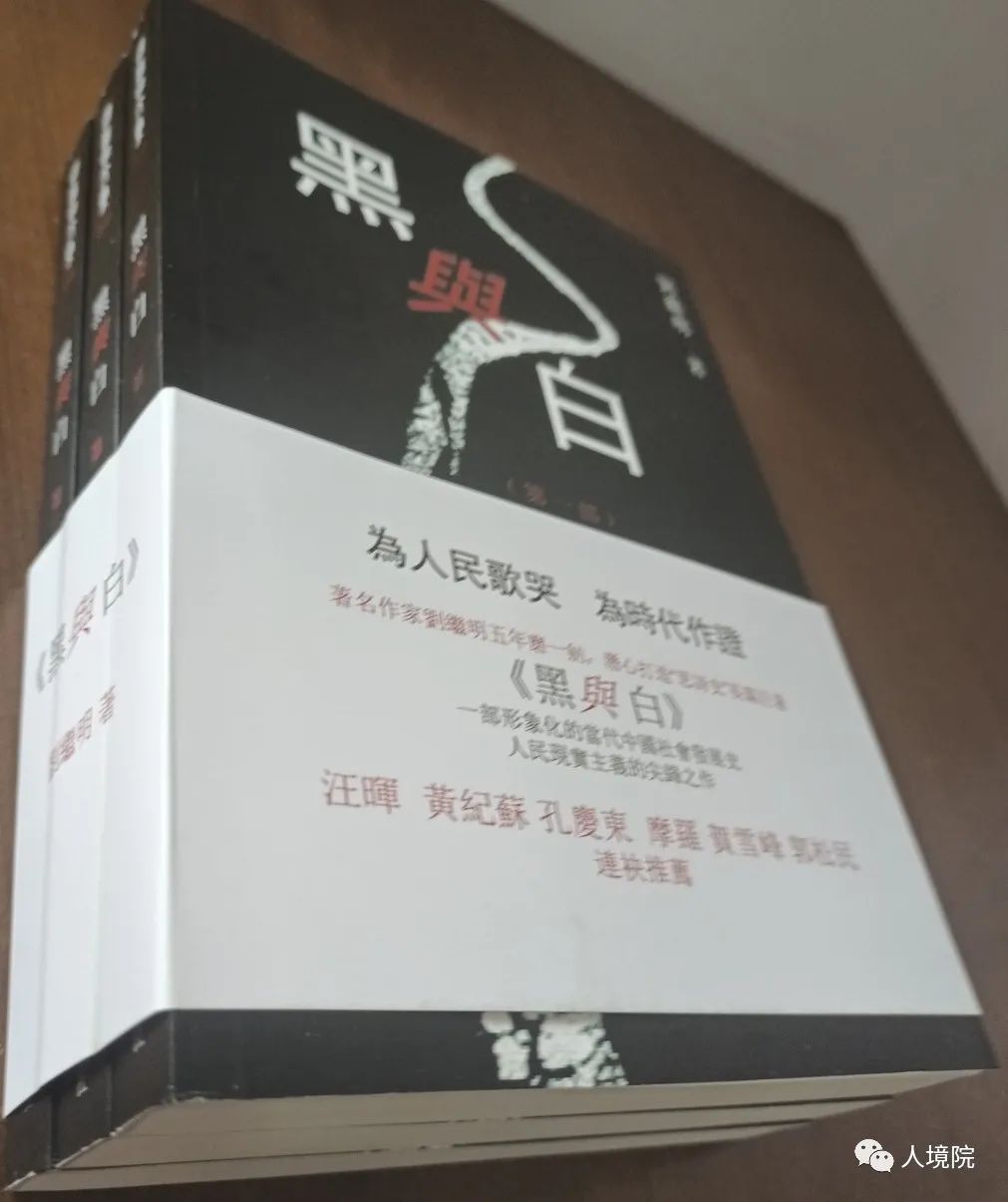若看西方主流媒體,便會(huì)得出這樣的結(jié)論:中國(guó)已成為經(jīng)濟(jì)超級(jí)大國(guó),正一心以大規(guī)模軍備競(jìng)賽來(lái)展示自己的軍事實(shí)力。當(dāng)選主席習(xí)近平剛剛接任前任主席胡錦濤,成為共產(chǎn)黨總書記兼中央軍委主席,進(jìn)而取得了對(duì)黨和軍隊(duì)的全面領(lǐng)導(dǎo)。
英國(guó)廣播公司(BBC)近期發(fā)表了一篇題為《中國(guó)擴(kuò)展軍事力量》的文章,正體現(xiàn)了西方媒體報(bào)道中國(guó)軍事計(jì)劃的典型方式。分析指出:“中國(guó)第一艘航母將在今年晚些時(shí)候開(kāi)始試航。去年年底,北京新型“隱形”戰(zhàn)斗機(jī)樣機(jī)的照片首次被曝光。此外,美國(guó)軍事專家認(rèn)為,中國(guó)已開(kāi)始部署世界上第一種能夠擊中海上移動(dòng)艦船的遠(yuǎn)程彈道導(dǎo)彈。”【1】
在日本,極富政治野心的右翼民族主義政客東京都知事石原慎太郎和大阪府知事橋下徹,以宣揚(yáng)反華言論正在贏得公眾的支持,聲稱日本必須發(fā)展本國(guó)實(shí)力來(lái)對(duì)抗中國(guó)軍事優(yōu)勢(shì)。今年五月,權(quán)威報(bào)紙《紐約時(shí)報(bào)》刊登了一篇聳人聽(tīng)聞的報(bào)道,造成了對(duì)中國(guó)宣布軍費(fèi)開(kāi)支要保持兩位數(shù)增長(zhǎng)的誤解。事實(shí)上,文章只是提到了中國(guó)將在去年的軍費(fèi)預(yù)算基礎(chǔ)上增加11%,這一數(shù)字甚至遠(yuǎn)遠(yuǎn)低于通貨膨脹率。
然而,當(dāng)我們仔細(xì)觀察奧巴馬總統(tǒng)宣布“重返亞太戰(zhàn)略”后美國(guó)軍隊(duì)在亞洲地區(qū)的軍事行動(dòng)時(shí),便可清楚地看到,這并非是中國(guó)主動(dòng)采取攻勢(shì)。中國(guó)只是針對(duì)美國(guó)做出回應(yīng),以消除將來(lái)對(duì)中國(guó)主權(quán)構(gòu)成真正威脅的隱患。
事實(shí)很簡(jiǎn)單,美國(guó)在任總統(tǒng)奧巴馬在總統(tǒng)大選電視辯論中將中國(guó)列為“敵對(duì)國(guó)”,清楚地表明了美國(guó)軍事重心的轉(zhuǎn)變。從美國(guó)近期在亞洲的導(dǎo)彈防御部署便可知其目標(biāo)旨在中國(guó),別無(wú)其他。美國(guó)以中國(guó)為軸心的本質(zhì)顯而易見(jiàn)。
根據(jù)官方數(shù)據(jù),中國(guó)軍費(fèi)約為900億美元,僅占美國(guó)軍費(fèi)開(kāi)支的10%。如果將國(guó)防相關(guān)的武器進(jìn)口和其他相關(guān)開(kāi)支計(jì)算在內(nèi),則軍費(fèi)大概在一年1110億美元左右。即使中國(guó)當(dāng)局在這些敏感領(lǐng)域未公布其完備數(shù)據(jù),其與美國(guó)相比仍明顯微不足道,更何況中國(guó)的軍事技術(shù)起步基礎(chǔ)還遠(yuǎn)遠(yuǎn)落后于美國(guó)。
美國(guó)國(guó)防預(yù)算是目前世界上最多的,遠(yuǎn)遠(yuǎn)高于其他國(guó)家,因此完全不會(huì)受到任何軍事威脅。19世紀(jì),英國(guó)皇家海軍按照其兩大潛在勁敵的艦隊(duì)規(guī)模,建造了自己的艦隊(duì);如今,美國(guó)的國(guó)防預(yù)算戰(zhàn)略家宣布,一旦美國(guó)所建的海軍不敵中國(guó)海軍和俄羅斯海軍總和的五倍,那么對(duì)美國(guó)來(lái)說(shuō),便意味著世界末日的到來(lái)。【2】
我們不妨將中國(guó)在上合組織中最強(qiáng)盟國(guó)俄羅斯的軍費(fèi)支出也計(jì)算進(jìn)來(lái),得到的年度軍費(fèi)支出總額也才不過(guò)1420億美元。世界軍費(fèi)支出最多的前十個(gè)國(guó)家,除美國(guó)第一,中國(guó)第二外,還包括英國(guó)、法國(guó)、日本、俄羅斯、沙特阿拉伯、德國(guó)、印度以及巴西。美國(guó)2011年的軍事支出總額竟達(dá)到了全球171個(gè)國(guó)家和地區(qū)支出總和的46%,幾乎占據(jù)了全世界軍費(fèi)支出的一半。【3】
顯然,盡管美國(guó)在全世界大談維和使命,推動(dòng)“民主”進(jìn)程,但美國(guó)追求的卻是“全方位主導(dǎo)”地位,即全面控制全球陸、海、空、太空、外太空及現(xiàn)在的賽博空間。【4】無(wú)疑,美國(guó)已決定以自己的軍事實(shí)力來(lái)確保其在全球的霸權(quán)地位。沒(méi)有其他可能的解釋了。
且不說(shuō)今日中國(guó)充滿活力的經(jīng)濟(jì)和維護(hù)國(guó)家利益的決心,僅僅因?yàn)橹袊?guó)的存在就足以使她成為五角大樓的新“假想敵”,取代了911事件后由布什-切尼政府為追求全球霸權(quán)做辯護(hù)而樹(shù)立的“假想敵”——伊斯蘭。
在忽略美國(guó)在東亞的利益近20年后,奧巴馬政府于2011年宣布,美國(guó)將其外交政策的“戰(zhàn)略軸心”,在軍事上和政治上轉(zhuǎn)向亞太地區(qū),尤其是東南亞地區(qū),即中國(guó)。
“奧巴馬主義”與亞洲彈道導(dǎo)彈防御系統(tǒng)
到目前為止,“中國(guó)軸心”戰(zhàn)略初期的關(guān)鍵在于建立包圍中國(guó)的大規(guī)模反導(dǎo)防御圈,從而消除中國(guó)發(fā)動(dòng)核攻擊的潛在可能。在伊拉克和阿富汗的軍事行動(dòng)失敗后,奧巴馬政府于2011年底明確公開(kāi)定義了新的軍事威脅。在訪問(wèn)遠(yuǎn)東期間,美國(guó)總統(tǒng)在澳大利亞將奧巴馬主義公諸于眾。【5】
以下是奧巴馬在澳大利亞演講的相關(guān)節(jié)選:
“亞洲擁有世界上絕大多數(shù)的有核國(guó)家和約全球一半的人口,這很大程度上決定了未來(lái)的世界是一個(gè)沖突的世紀(jì)還是相互協(xié)作的世紀(jì)……因此,作為總統(tǒng),我審慎地做出了戰(zhàn)略決策——……美國(guó)在塑造亞太地區(qū)上將發(fā)揮更加重要和長(zhǎng)期的作用……我已指示我的國(guó)家安全團(tuán)隊(duì)優(yōu)先考慮在亞太地區(qū)建立我們的軍事存在……我們將保持我們?cè)谠摰貐^(qū)特有的威懾力,確保消除對(duì)和平構(gòu)成的威脅……美國(guó)是太平洋國(guó)家,這意味著我們?cè)谶@里必須加強(qiáng)部署。事實(shí)上,我們已經(jīng)在整個(gè)亞太地區(qū)著手現(xiàn)代化美國(guó)的防衛(wèi)。……我們可以預(yù)見(jiàn)美國(guó)未來(lái)在澳大利亞的防衛(wèi)態(tài)勢(shì)……我相信我們可以應(yīng)對(duì)我們共同的挑戰(zhàn),如武器擴(kuò)散和包括中國(guó)南海合作問(wèn)題在內(nèi)的海事安全問(wèn)題。【6】
2012年8月24日,紐約《華爾街日?qǐng)?bào)》報(bào)道稱,奧巴馬政府將拓寬其在亞太地區(qū)的導(dǎo)彈防御屏障(BMD),以此作為最新宣布的“中國(guó)軸心”政策的一部分。【7】
美國(guó)官方對(duì)其在亞洲舞臺(tái)上部署彈道導(dǎo)彈防御系統(tǒng)給出的理由是,保護(hù)日韓及美國(guó)在亞洲地區(qū)的其他盟國(guó)不受朝鮮核導(dǎo)彈的攻擊。這種說(shuō)法根本經(jīng)不起推敲。
事實(shí)上,大量報(bào)道顯示,美國(guó)已決定利用日韓澳建立大型彈道導(dǎo)彈防御網(wǎng),其真正目標(biāo)并非朝鮮,而是亞洲地區(qū)唯一一個(gè)具有遠(yuǎn)程發(fā)射能力的潛在核威脅國(guó)家——中國(guó)。全面控制中國(guó)的未來(lái)發(fā)展趨勢(shì)是美國(guó)新軍事戰(zhàn)略必要的一部分。
此外,從日本政府適時(shí)挑起中日釣魚(yú)島爭(zhēng)端一事,同樣可以看出美國(guó)彈道導(dǎo)彈防御系統(tǒng)的進(jìn)攻意圖。釣魚(yú)島位于中國(guó)東海,據(jù)信該地區(qū)擁有龐大的天然氣儲(chǔ)備。【8】
日本導(dǎo)彈防御的關(guān)鍵
2012年9月,美國(guó)防部長(zhǎng)萊昂•帕內(nèi)塔(Leon Panetta)宣布,美日雙方就在日本領(lǐng)土部署另一先進(jìn)的大型導(dǎo)彈防御雷達(dá)達(dá)成重大協(xié)議。【9】帕內(nèi)塔在聲明中宣稱:“美國(guó)此舉的目的在于加強(qiáng)日本的防御能力,同時(shí)加強(qiáng)美國(guó)軍隊(duì)的前沿部署,進(jìn)而有效保護(hù)美國(guó)本土不會(huì)受到來(lái)自朝鮮彈道導(dǎo)彈的威脅。”【10】我們只要看一看地圖上帕內(nèi)塔所說(shuō)的部署核武器的位置,便可知道,中國(guó)導(dǎo)彈發(fā)射場(chǎng)就在朝鮮邊境,剛好在美日新彈道導(dǎo)彈防御系統(tǒng)的射程范圍之內(nèi)。
美國(guó)在很久以前就已決定要在日本部署先進(jìn)的彈道導(dǎo)彈防御系統(tǒng),作為其全球軍事霸權(quán)戰(zhàn)略的必要組成部分。2003年12月19日,日本政府發(fā)布內(nèi)閣決定——《引進(jìn)彈道導(dǎo)彈防御系統(tǒng)及其他措施》,標(biāo)志著日本正式?jīng)Q定與美國(guó)合作建立彈道導(dǎo)彈防御系統(tǒng)。自此,建立健全的導(dǎo)彈防御系統(tǒng)便成為了日本國(guó)家安全的重中之重。
根據(jù)日本現(xiàn)任政府對(duì)日本憲法第九條的解讀,日本不得實(shí)施集體自衛(wèi)權(quán),利用導(dǎo)彈防御能力對(duì)第三方國(guó)家提供防衛(wèi)——即便是像美國(guó)這樣的盟國(guó)也是明文禁止的。極有可能在今年12月16日的眾議院選舉中當(dāng)選總理的自民黨領(lǐng)導(dǎo)人安倍晉三(Shinzo Abe),強(qiáng)烈支持建立彈道導(dǎo)彈防御系統(tǒng)和修改憲法第九條。這就意味著,日本將發(fā)生重大轉(zhuǎn)變,擺出更為好斗的反華軍事姿態(tài)。【11】
據(jù)美國(guó)軍事新聞報(bào)道,日本彈道導(dǎo)彈防御新計(jì)劃最重要的特征在于配備了由美國(guó)雷神公司研發(fā)的強(qiáng)大的預(yù)警雷達(dá),即X波段雷達(dá)(X-band)。該雷達(dá)為“大型相控陣火控傳感器,以精密鑒別且支持?jǐn)r截機(jī)為特色”,它旨在對(duì)抗“流氓國(guó)家”的威脅,并將部署在日本南部某島嶼。【12】
日本防衛(wèi)大臣森本•敏證實(shí),日本與美國(guó)就導(dǎo)彈防御問(wèn)題,包括如何部署美國(guó)的X波段雷達(dá)系統(tǒng)進(jìn)行過(guò)多次討論。【13】自2006年以來(lái),日本已在其北部轄區(qū)青森縣部署了一部X波段雷達(dá)。此舉遭到了青森縣居民的強(qiáng)烈反對(duì),因?yàn)槔走_(dá)的出現(xiàn)將使當(dāng)?shù)鼐用癯蔀闈撛跀橙税l(fā)動(dòng)進(jìn)攻的目標(biāo)。【14】
亞洲地區(qū)彈道導(dǎo)彈防御體系
美國(guó)優(yōu)先在亞洲地區(qū)部署彈道導(dǎo)彈防御系統(tǒng)的對(duì)象不僅包括日本,其還在幫助印度完善印度的新導(dǎo)彈防御系統(tǒng)。印度希望在美國(guó)的幫助下建立多層導(dǎo)彈防御網(wǎng),名義上是為防御巴基斯坦,而私底下卻是針對(duì)中國(guó)。今年早些時(shí)候,印度試驗(yàn)發(fā)射了烈火V(Agni-V)中程彈道導(dǎo)彈,其國(guó)內(nèi)新聞公開(kāi)報(bào)道稱,該導(dǎo)彈的最重要特征在于能夠打擊中國(guó)的任何地方。【15】
華盛頓國(guó)會(huì)研究服務(wù)部(WCRS)導(dǎo)彈防御專家斯蒂芬•希爾德雷思(Steven Hildreth)表示,美國(guó)正在為建立亞洲地區(qū)范圍內(nèi)的導(dǎo)彈防御系統(tǒng)奠定基礎(chǔ),該防御系統(tǒng)為美國(guó)與亞洲國(guó)家,尤其是與日本、韓國(guó)和澳大利亞共同建立的彈道導(dǎo)彈防御系統(tǒng)。希爾德雷思還指出,此舉的假定目標(biāo)在于遏制朝鮮的導(dǎo)彈威脅,“可實(shí)際情況是我們還從長(zhǎng)遠(yuǎn)角度關(guān)注房間里的大象,也就是中國(guó)”。據(jù)《華爾街日?qǐng)?bào)》報(bào)道,X波段雷達(dá)圓弧除防御朝鮮威脅外,還將允許美國(guó)深入窺視中國(guó)。
此外,幾位未提及姓名的美國(guó)國(guó)防部官員稱,美國(guó)軍方將在菲律賓部署第三部X波段雷達(dá),從而使得美國(guó)能夠準(zhǔn)確地跟蹤朝鮮和中國(guó)大部分地區(qū)發(fā)射的彈道導(dǎo)彈。【17】
除日本外,美國(guó)還邀請(qǐng)了韓國(guó)和澳大利亞加入亞洲彈道導(dǎo)彈防御計(jì)劃。中國(guó)官方英文報(bào)刊《環(huán)球時(shí)報(bào)》指出,“在所有有核國(guó)家中,中國(guó)不僅是擁有核武器數(shù)量最少的國(guó)家,也是唯一一個(gè)承諾‘不首先使用核武器’的國(guó)家。在亞洲部署導(dǎo)彈防御系統(tǒng)是對(duì)中國(guó)核政府的不尊重。”
《環(huán)球時(shí)報(bào)》還進(jìn)一步指出:“日韓澳如果都加入美國(guó)防御系統(tǒng),亞洲很可能出現(xiàn)惡性軍備競(jìng)賽。中國(guó)并不希望看到這類事情的發(fā)生,但軍備競(jìng)賽一旦出現(xiàn),中國(guó)只好應(yīng)對(duì)。美國(guó)在給亞洲制造動(dòng)蕩,可能在未來(lái)激化更多的沖突,中國(guó)應(yīng)盡其所能防止事態(tài)惡化,同時(shí)也應(yīng)做好最壞的打算。”【18】
彈道導(dǎo)彈防御系統(tǒng)鼓勵(lì)發(fā)動(dòng)首次核攻擊
布什政府和奧巴馬政府決定先在波蘭、捷克共和國(guó)和土耳其建立包圍俄羅斯的彈道導(dǎo)彈環(huán)形防御圈,以防御俄羅斯的洲際彈道導(dǎo)彈。隨后,提出了美國(guó)的亞洲彈道導(dǎo)彈防御策略。美國(guó)著名退役軍官曾警告過(guò),針對(duì)潛在核對(duì)手部署彈道導(dǎo)彈防御系統(tǒng),無(wú)論是針對(duì)俄羅斯、中國(guó)、朝鮮還是伊朗,從嚴(yán)格的軍事戰(zhàn)略意義上說(shuō),都是瘋狂的舉動(dòng)。
哪怕只是擁有一個(gè)初步的導(dǎo)彈防御屏障,美國(guó)便能向俄羅斯或中國(guó)的導(dǎo)彈發(fā)射井和潛艇艦隊(duì)發(fā)動(dòng)第一次導(dǎo)彈攻擊,且絲毫不用擔(dān)心遭到有效反攻,因?yàn)槎砹_斯或中國(guó)所剩無(wú)幾的核導(dǎo)彈根本無(wú)法做出具有足夠破壞力的回應(yīng)。
冷戰(zhàn)期間,由于華約和北約擁有相互毀滅的能力,雙方進(jìn)入了軍事戰(zhàn)略家所稱的恐核制衡狀態(tài),即確保相互毀滅以達(dá)到相互制約(MAD)。盡管局勢(shì)令人害怕,但奇怪的是,當(dāng)時(shí)的情況卻比如今美國(guó)單方尋求核主導(dǎo)地位更加穩(wěn)定。恐核制衡是基于雙方核能力相當(dāng)、開(kāi)戰(zhàn)任何一方都沒(méi)有勝算的前景下形成的,也因此,核戰(zhàn)爭(zhēng)在當(dāng)時(shí)是無(wú)法想象的。
而今,美國(guó)在歐洲建立針對(duì)俄羅斯的彈道導(dǎo)彈防御系統(tǒng),在亞洲建立針對(duì)中國(guó)的彈道導(dǎo)彈防御系統(tǒng),是在尋求發(fā)動(dòng)核戰(zhàn)爭(zhēng)的可能性。這簡(jiǎn)直是瘋了。。
第一個(gè)擁有彈道導(dǎo)彈防御屏障(BMD)的國(guó)家實(shí)際上便擁有了發(fā)動(dòng)第一次攻擊的能力,從而使得彈道導(dǎo)彈防御屏障不再是防御性的,而是極具攻擊性。羅伯特•鮑曼中校在里根總統(tǒng)時(shí)期擔(dān)任美國(guó)空軍導(dǎo)彈防御計(jì)劃負(fù)責(zé)人,他最近將導(dǎo)彈防御系統(tǒng)稱為“發(fā)動(dòng)首次攻擊所缺少的一環(huán)。”【19】BMD為發(fā)動(dòng)首次核攻擊提供了動(dòng)機(jī),這在以往是難以想象的,因?yàn)榘l(fā)動(dòng)攻擊的國(guó)家無(wú)法確定本國(guó)是否會(huì)遭到核放射性的摧毀,成為一片廢墟。在軍事意義上,彈道導(dǎo)彈防御系統(tǒng)其實(shí)是進(jìn)攻性的,與其名稱中的“防御”剛好相反,它的正確命名應(yīng)該是“彈道導(dǎo)彈攻擊系統(tǒng)”。
鮑曼進(jìn)一步提到:
“在里根和老布什任內(nèi),這個(gè)機(jī)構(gòu)是戰(zhàn)略防御倡議局(SDIO);在克林頓任內(nèi),變成了彈道導(dǎo)彈防御局。現(xiàn)在小布什把這個(gè)機(jī)構(gòu)重新命名為導(dǎo)彈防御局 (MDA),給了它免于監(jiān)督的自由,在以前只有“黑計(jì)劃”(即不公開(kāi)的軍事計(jì)劃,主要指秘密武器裝備研制計(jì)劃)才有這個(gè)權(quán)利。如果國(guó)會(huì)不迅速采取行動(dòng),這個(gè)新的獨(dú)立機(jī)構(gòu)可能會(huì)實(shí)質(zhì)性地獲得無(wú)限制的預(yù)算,并把這些錢花在不受公眾和國(guó)會(huì)監(jiān)督的武器上,在這些武器部署到空間之前我們根本不知道都是些什么東西。理論上,屆時(shí)空間戰(zhàn)士將統(tǒng)治世界,能夠在不進(jìn)行預(yù)先警告的情況下摧毀地球上的任何目標(biāo)。”【20】
美國(guó)在亞洲進(jìn)行彈道導(dǎo)彈防御系統(tǒng)的重大部署,很有可能是中共十八大會(huì)議突然決定推遲到美國(guó)大選結(jié)束后的主要原因,以此中國(guó)便可明確其將面臨的是羅姆尼總統(tǒng)還是奧巴馬總統(tǒng)。在奧巴馬首次公開(kāi)其“亞洲軸心”和“奧巴馬主義”以來(lái)的幾個(gè)月里,美國(guó)所做出的軍事決定正是導(dǎo)致中國(guó)越來(lái)越擔(dān)心奧巴馬“戰(zhàn)略軸心”的原因所在。
注:
[1] Jonathan Marcus, China extending military reach, 14 June 2011, http://www.bbc.co.uk/news/world-asia-pacific-13761711
[2] Winslow Wheeler, The Military Imbalance: How The US Outspends the World, March 16, 2012, accessed in http://www.iiss.org/publications/military-balance/the-military-balance-2012/press-statement/figure-comparative-defence-statistics/.
[3] Ibid.
[4] F. William Engdahl, Full Spectrum Dominance: Totalitarian Democracy in the New World Order, 2010, edition.engdahl,Wiesbaden.
[5] President Barack Obama, Remarks By President Obama to the Australian Parliament, November 17, 2011, accessed in http://www.whitehouse.gov/the-press-office/2011/11/17/remarks-president-obama-australian-parliament.
[6] Ibid.
[7]Brian Spegele et al, US Missile Shield Plan Seen Stoking China Fears, The Wall Street Journal, August 24, 2012, accessed in http://online.wsj.com/article/SB10000872396390444082904577609054116070694.html.
[8] Kazunori Takada, Japanese firms shut China plants, US urges calm in islands row, Reuters, September 17, 2012, accessed in http://www.reuters.com/article/2012/09/17/uk-china-japan-idUSLNE88G01A20120917.
[9] Thom Shanker and Ian Johnson, US Accord With Japan Over Missile Defense Draws Criticism in China, The New York Times, September 17, 2012, accessed in http://www.nytimes.com/2012/09/18/world/asia/u-s-and-japan-agree-on-missile-defense-system.html?pagewanted=all
[10] Chris Carroll, US, Japan Announce Expanded Missile Defense System, September 17, 2012, Stars and Stripes, accessed in http://www.military.com/daily-news/2012/09/17/us-japan-announce-expanded-missile-defense-system.html
[11] Masako Toki, Missile defense in Japan, Bulletin of the Atomic Scientists, 16 January 2009, accessed in http://www.thebulletin.org/web-edition/features/missile-defense-japan
[12] RT, Shield revealed US spreads missile defenses East, Russia Today, 24 August, 2012, accessed in http://rt.com/news/us-missile-defense-asia-432/.
[13] Brian Spegele, et al, US Missile Shield Plan Seen Stoking China Fears, Wall Street Journal, August 24, 2012, accessed in http://online.wsj.com/article/SB10000872396390444082904577609054116070694.html
[14] Ibid.
[15] Trefor Moss, Asia’s New Arms Race: Missiles, Missile Defenses, August 27, 2012, accessed in http://thediplomat.com/flashpoints-blog/2012/08/27/asias-new-arms-race-missiles-missile-defenses/.
[16] RT, op. cit.
[17] Brian Spegele, op. cit.
[18] Global Times, US missile shield fosters Asian arms race, Beijing, Global Times, March 29, 2012, accessed in http://www.globaltimes.cn/NEWS/tabid/99/ID/702623/US-missile-shield-fosters-Asian-arms-race.aspx.
[19] F. William Engdahl, Full Spectrum Dominance: Totalitarian Democracy in the New World Order, edition.engdahl,Wiesbaden, 2009, p. 162.
[20] Ibid., p. 161.
原文鏈接:http://www.globalresearch.ca/no-wonder-china-is-nervous-as-obama-pivots/5312523
附原文:
China a Military Threat? No Wonder China is Nervous as Obama Pivots
By F. William Engdahl
Global Research, November 21, 2012
Region: Asia
Theme: Militarization and WMD
To read the mainstream Western media, one would conclude that China has become an economic giant now intent on flexing its military muscle and making a massive arms buildup to do so. China’s designated new President, Xi Jinping, has just won both the top Communist party post from predecessor Hu Jintao as well as the head of the powerful Central Military Commission, giving Xi a full takeover of party and armed forces.
A recent BBC analysis, in an article titled “China extending military reach,” is typical of Western media coverage of China’s military program: “China‘s first aircraft carrier will begin sea trials later this year. Late last year, the first pictures were leaked of the prototype of Beijing‘s new “stealth” fighter. And US military experts believe that China has begun to deploy the world’s first long-range ballistic missile capable of hitting a moving ship at sea.“ [1]
In Japan, nationalist politicians like politically ambitious Tokyo Governor Shintaro Ishihara and Toru Hashimoto, the mayor of Osaka, are gaining popularity with anti-China rhetoric and by claiming Japan must develop capacities to oppose Chinese military ascendency. In May the authoritative New York Times ran an alarming story to the effect that China announced a “double-digit increase” in military spending. In the actual text of the article they report an 11% increase over the previous budget, far less than even the rate of inflation.
However, when we examine in detail the actual redeployment and military moves of US Armed Forces in the Asia region following President Obama’s announcement of a new “Asia Pivot” refocus of US military capacities from Western Europe to the Asia region, it becomes clear China is re-acting, in order to attempt to deal with quite real threats to its future sovereignty rather than acting in an aggressive posture.
The mere fact that a standing President, Obama, during nationally televised Presidential debates labeled China as an “adversary” is indicative of the US military posture change. The depth and nature of the US pivot to China is crystal clear when one takes a closer look at the recent developments in an Asian US Missile Defense deployment, clearly aimed at China and no other.
China officially spent barely 10% of what the US does on its defense, some $90 billion, or if certain defense-related arms import and other costs are included, perhaps $111 billion a year. Even if the Chinese authorities do not publish complete data on such sensitive areas, it’s clear China spends a mere fraction of the USA and is starting from a military-technology base far behind the USA.
The US defense budget is not just by far the world’s largest. It dominates everyone else, completely independent of any perceived threat. In the nineteenth century, the British Royal Navy built the size of its fleet according to the fleets of Britain’s two most powerful potential enemies; America’s defense budget strategists declare it will be “doomsday” if the United States builds its navy to anything less than five times that of China and Russia combined.[2]
If we include the spending by Russia, China’s strongest ally within the Shanghai Cooperation Organization, their combined total annual defense spending is barely $142 billion. The world’s ten top defense spending nations in addition to the USA as largest, and China as second largest, include the UK, France, Japan, Russia, Saudi Arabia, Germany, Indiaand Brazil. In 2011 the military spending of the United States totaled a staggering 46% of total spending by the world’s 171 governments and territories, almost half the entire world. [3]
Clearly, for all its rhetoric about peace-keeping missions and “democracy” promotion, the Pentagon is pursuing what its planners refer to as “Full Spectrum Dominance,” the total control of all global air, land, ocean, space, outer-space and now cyberspace.[4] It is clearly determined to use its military might to secure global domination or hegemony. No other interpretation is possible.
China today, because of its dynamic economic growth and its determination to pursue sovereign Chinese national interests, merely because China exists, is becoming the Pentagon new “enemy image,” or adversary, now replacing the no longer useful “enemy image” of Islam used after September 2001 by the Bush-Cheney Administration to justify the Pentagon’s global power pursuit.
After almost two decades of neglect of its interests in East Asia, in 2011, the Obama Administration announced that the US would make “a strategic pivot” in its foreign policy to focus its military and political attention on the Asia-Pacific, particularly Southeast Asia, that is, China.
‘Obama Doctrine’ and Asian BMD
To date the heart of the initial stages of the China Pivot involve building a massive anti-Ballistic Missile Defense ring around Chinato neutralize China’s nuclear strike potential. During the final months of 2011 the Obama Administration clearly defined a new public military threat doctrine for US military readiness in the wake of the US military failures in Iraq and Afghanistan. During a Presidential trip to the Far East, while in Australia, the US President unveiled what is being termed the Obama Doctrine.[5]
The following sections from Obama’s speech in Australia are worth citing in detail:
With most of the world’s nuclear power and some half of humanity, Asia will largely define whether the century ahead will be marked by conflict or cooperation…As President, I have, therefore, made a deliberate and strategic decision — …the United States will play a larger and long-term role in shaping this region and its future…I have directed my national security team to make our presence and mission in the Asia Pacific a top priority… We will preserve our unique ability to project power and deter threats to peace…The United States is a Pacific power, and we are here to stay. Indeed, we are already modernizing America’s defense posture across the Asia Pacific. ..We see our new posture here in Australia…I believe we can address shared challenges, such as proliferation and maritime security, including cooperation in the South China Sea.[6]
On August 24, 2012the New York Wall Street Journal reported that the Obama Administration as part of its newly-announced policy of China Pivot, will expand its missile-defense shield, Ballistic Missile Defense or BMD as it is known in the military, in the Asia-Pacific region. [7]
The official reason given by the Pentagon for its new BMD deployment to the Asian theater is to protect Japan, South Korea and other US allied countries in the region against a North Korean nuclear missile attack. That argument doesn’t stand close scrutiny.
In reality, according to numerous reports, Washington has decided to invest in a major Ballistic Missile Defense network using Japan, South Korea and Australia. The real target of the BMD system is not North Korea, but rather the Peoples’ Republic of China, the only power in the region possessing even a potential nuclear threat with serious long-range delivery capabilities. It is part of the new Pentagon strategy of imposing full control over the future development of China.
The Washington BMD offensive has to be viewed as well in the light of the well-timed Japanese government decision to deliberately provoke tension with China over the disputed Diaoyu Islands in the East China Sea, a region believed to be vastly rich in natural gas reserves.[8]
Part III: Japan Missile Defense Key
In September 2012, Defense Secretary Leon Panetta announced that the United Statesand Japan had reached a major agreement to deploy a second major advanced missile-defense radar on Japanese territory.[9] In his announcement Panetta declared, “The purpose of this is to enhance our ability to defend Japan. It’s also designed to help forward-deployed US forces and it also will be effective in protecting the US homeland from the North Korean ballistic missile threat.”[10] A glance at the map shows the nuclear holes in Panetta’s statement. Chinese missile sites are just across the Korean border, well in range of the US-Japan new BMD installation.
The Washington decision to place advanced BMD infrastructure in Japan was made long ago as part of a US strategy of global military dominance. The BMD cooperation with Japan began in earnest on December 19, 2003, when the Japanese government issued the cabinet decision “On Introduction of Ballistic Missile Defense System and Other Measures.” Ever since, establishing a robust missile defense system has been a Japan national security priority.
Under the current Japanese government’s interpretation of Article 9 of Japan’s Constitution, Japan’s participation in collective self-defense is prohibited, as is using missile defense capabilities to defend a third country–even an ally such as the United States. Shinzo Abe, head of the Liberal Democratic Party, almost certain to become Prime Minister after the December 16 Lower House elections, is a strong advocate of BMD and of changing Article 9. That means we can expect a major shift to a more militant anti-China military posture from Tokyo. [11]
According to US military press accounts, the most important feature of the new Japanese BMD project will be installation of a powerful early-warning radar, ‘X-band’, made by Raytheon Co. It’s “a large, phased-array fire control sensor, featuring precision discrimination and interceptor support,” designed to counter threats from ‘rogue states.’ It will be installed on an unnamed southern Japanese island.[12]
Japan’s defense minister Satoshi Morimoto confirmed that Tokyo and Washington “have had various discussions over missile defenses, including how to deploy the US’s X-Band radar system.” [13] Japan already hosts one X-Band radar in the northern prefecture of Aomori, since 2006. It’s heavily opposed by local residents who fear, not without good reason, that the presence of the radar makes them a target for potential enemy attacks.[14]
BMD across Asia
The US move to prioritize its BMD installation in Asia involves not only Japan. Washington is also helping India improve its new missile defense system. The Indians want to build a multi-layer missile defense network with US help. Publicly India’s government cites Pakistan as the reason. Privately, it’s China. India test-fired its Agni-V intermediate range ballistic missile earlier this year and the Indian press openly cited the system’s ability to strike anywhere in China as the most important feature.[15]
According to Steven Hildreth, a missile-defense expert with the Washington Congressional Research Service, the USA is “laying the foundations” for a region-wide missile defense system that would consist of US ballistic missile defenses combined with those of regional powers, particularly Japan, South Korea and Australia. Although supposedly aimed at containing threats from North Korea, Hildreth also stated, “the reality is that we’re also looking longer term at the elephant in the room, which is China.” According to a report in the Wall Street Journal the X-band arc would allow the US to ‘peer deeper’ into China, in addition to North Korea. [16]
As well, there are reports from unnamed US Defense Department officials that a third X-Band radar would be positioned in the Philippines, allowing the Pentagon to accurately track ballistic missiles launched from North Korea but also from large parts of China.[17]
In addition to Japan, Washington has invited South Korea and Australia to join the Asian BMD program. The official Chinese English language daily, Global Times, pointed out, “Among the nuclear powers, China has the smallest number of nuclear weapons. It is also the only country to make a ‘no first use’ commitment. Installing a missile defense system in Asia disrespects China’s nuclear policy.”
The Global Times article notes further, “If Japan, South Korea and Australia join the system, a vicious arms race in Asia may follow. It is not what China wants to see, but it will have to deal with it if the arms race happens. The US is creating waves in Asia. The region may see more conflicts intensify in the future. China should make utmost efforts to prevent it, but prepare for the worst.” [18]
Part V: BMD encourages Nuclear First Strike
The US BMD strategy in Asia follows a decision by the Bush and Obama Administrations to first deploy BMD in a ring surrounding Russia with installations in Poland, the Czech Republic andTurkey, aimed at Russia’s Intercontinental Ballistic Missile arsenal. As prominent retired US military officers have warned, deploying Ballistic Missile Defense against a potential nuclear opponent, whether Russia or China or North Korea or Iran is madness in strict military strategy terms.
With even a primitive missile defense shield, the US could launch a first strike attack against Russian or Chinese missile silos and submarine fleets with less fear of effective retaliation; the few remaining Russian or Chinese nuclear missiles would be unable to launch a response sufficiently destructive.
During the Cold War, the ability of the Warsaw Pact and NATO to mutually annihilate one another had led to a nuclear stalemate dubbed by military strategists, MAD—Mutually Assured Destruction. It was scary but, in a bizarre sense, more stable than what would come with a unilateral US pursuit of nuclear primacy. MAD was based on the prospect of mutual nuclear annihilation with no decisive advantage for either side; it led to a world in which nuclear war had been ‘unthinkable.’
Now the US, with BMD in Europe against Russia and in Asia against China, is pursuing the possibility of nuclear war as ‘thinkable.’ That is really and truly ‘mad.’
The first nation with a ballistic missile ‘defense’ shield (BMD) would de facto have ‘first strike ability,’ making BMD not defensive but offensive in the extreme. Lt. Colonel Robert Bowman, Director of the US Air Force Missile Defense Program during the Reagan era, recently called missile defense, “the missing link to a First Strike.” [19] BMD gives an incentive to make a first nuclear strike, something never before imaginable owing to the lack of certainty one’s nation would not become nuclear radioactive rubble. In military terms, BMD is offensive, not defensive contrary to the name, and should properly be named Ballistic Missile Offense.
Bowman further notes:
Under Reagan and Bush I, it was called the Strategic Defense Initiative Organization (SDIO). Under President Clinton, it became the Ballistic Missile Defense Organization (BMDO). Now Bush II made it the Missile Defense Agency (MDA) and has given it the freedom from oversight and audit previously enjoyed only by the black or top secret programs. If Congress doesn’t act soon, this new independent agency may take their essentially unlimited budget and spend it outside of public and Congressional scrutiny on weapons that we won’t know anything about until they’re in space. In theory, then, the space warriors would rule the world, able to destroy any target on earth without warning. Will these new super weapons bring the American people security? Hardly. [20]
Washington’s major deployment of BMD across Asia is a major reason likely for the sudden decision to delay the 18th Party Congress until after the US elections to see whether China faced a President Romney or President Obama. What has materialized in terms of US military decisions in the few months since Obama first proclaimed his Asia Pivot and Obama Doctrine makes clear why China is increasingly nervous about Obama ‘pivots.’
F. William Engdahl is economist and geopolitical analyst. More about his various books and articles can be found on www.williamengdahl.com
(《環(huán)球視野globalview.cn》第509期)
相關(guān)文章
- 美大搞“終極反導(dǎo)”要癱瘓中國(guó)核戰(zhàn)力
- 美國(guó)將把釣魚(yú)島防衛(wèi)義務(wù)寫入國(guó)防授權(quán)法案
- 親吻奧巴馬是昂山素季家族的傳統(tǒng)
- 美雜志評(píng)全球百大思想家 昂山素季與吳登盛居首
- 古巴導(dǎo)彈危機(jī):美國(guó)對(duì)核戰(zhàn)爭(zhēng)玩俄式“輪盤賭”
- 恩道爾:敘、土、以與大中東能源戰(zhàn)爭(zhēng)
- 恩道爾:目前中東動(dòng)蕩只是美國(guó)“大中東計(jì)劃”戰(zhàn)略的一部
- [CCTV2對(duì)話]恩道爾:激辯石油迷局
- 美國(guó)要打核戰(zhàn),中國(guó)的安全支點(diǎn)在哪?
- 對(duì)話恩道爾:石油枯竭是被刻意創(chuàng)造出的神話
「 支持烏有之鄉(xiāng)!」
您的打賞將用于網(wǎng)站日常運(yùn)行與維護(hù)。
幫助我們辦好網(wǎng)站,宣傳紅色文化!
歡迎掃描下方二維碼,訂閱烏有之鄉(xiāng)網(wǎng)刊微信公眾號(hào)







